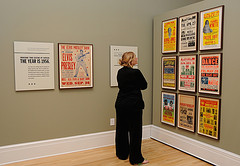Originally published June 7, 2014 and updated December 29, 2016.
What is Content Curation?
The term “Content Curation” is a hot one among marketers. In essence, it’s finding great content and sharing that content to help your customers and let people know what you’re about. You don’t have to create everything to associate yourself with it – in a world where an insane quantity of content is produced all the time people who can sift through everything and deliver the valuable pieces are an asset to their customers.
What’s wrong with Content Curation?
There’s nothing wrong with sharing valuable pieces of relevant content. Even better is when you add your own perspective. However, many people crowd their feed with articles that are shared without any additional insight. Additionally, many people are sharing the same articles from the same dozen sources. Some go as far as literally having RSS feeds pump content onto their social networks, particularly Twitter. People are essentially drowning out their own personality and perspective as their feeds become RSS feeds.
What are the benefits to me of sharing content?
Content curation helps establish you as an expert.
People will know you’re someone to watch to get great content. That is, if you add something to that content. If you highlight valuable parts, or comment. Without that, your name probably won’t be associated with the content, and people won’t know the point of reading the content.
You get impact with less effort.
Yes, you should produce your own content, too. But put simply, your clients will value your perspective if you’re an expert and you don’t need to be the creator of all content. Just remember, an expert adds their perspective. A curator doesn’t just hang paintings up – they present ideas, highlight aspects, and call your attention.
Feedback.
One of the great things about creating or curating content is the feedback from current, past and potential clients. Hearing from people in the field who really need the expertise you’re offering is a great way to guide your editorial calendar and reading plan. A good way to avoid being an RSS feed is to comment, highlight parts of the article, and tag specific people who you think would be interested.
Keeps you informed
Making a commitment to content curation keeps you informed of what’s going on. You’re constantly looking for new sources of information and reading up on the next big thing before most other people. This will help you stay relevant and shape your business as needed.
OK, how do I do this?
In moderation, above all else. Be well read. When you find something good, share it. Add your perspective. Call out parts. Tag people. Don’t just post links and summaries to articles and blog posts.

![By User:Jpquidores (Own work) [CC BY-SA 3.0 (http://creativecommons.org/licenses/by-sa/3.0)], via Wikimedia Commons](http://joshmccormack.com/wp-content/uploads/sites/3/2016/02/Angpao_Hongbao_Chinese_Red_Envelop_with_Money-520x245.jpg)


